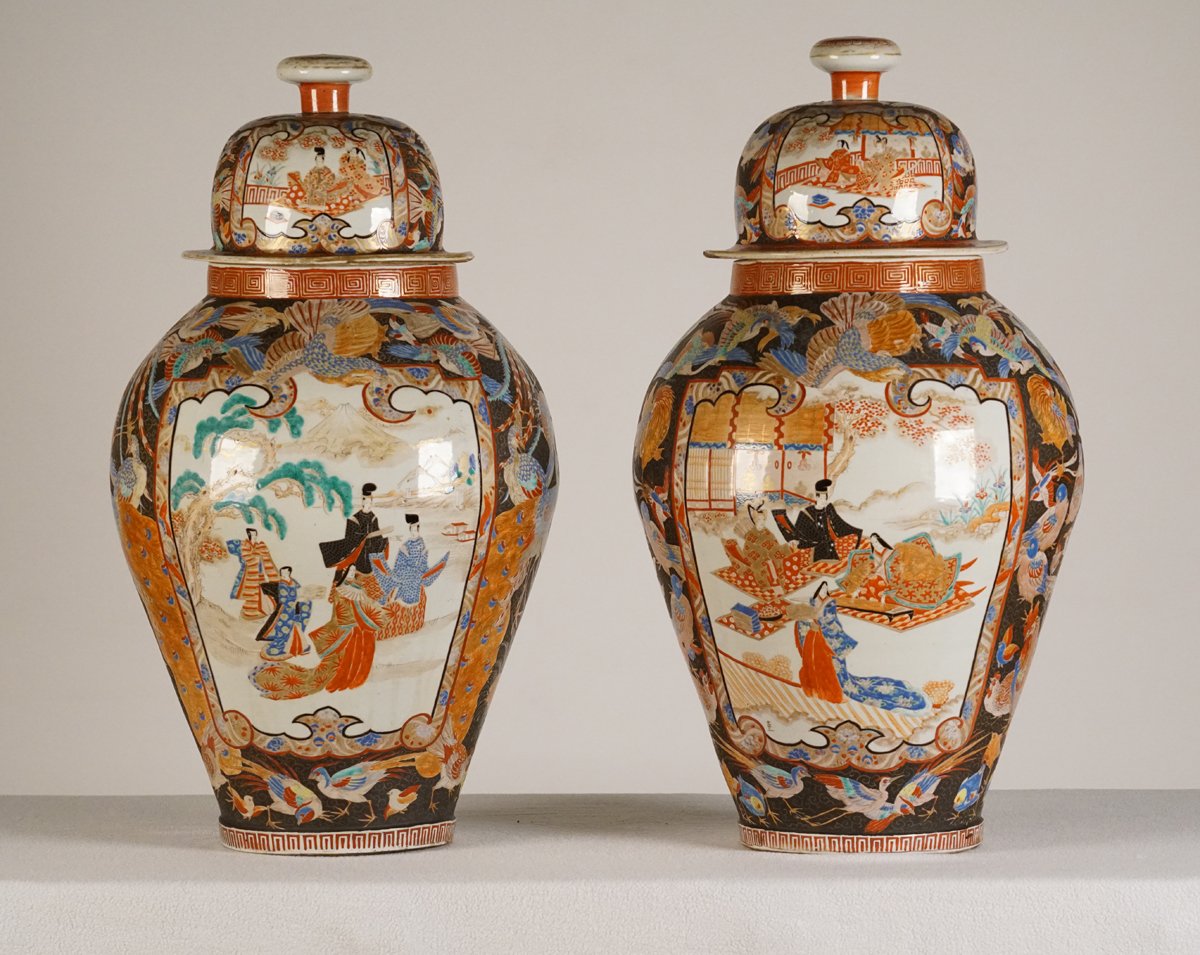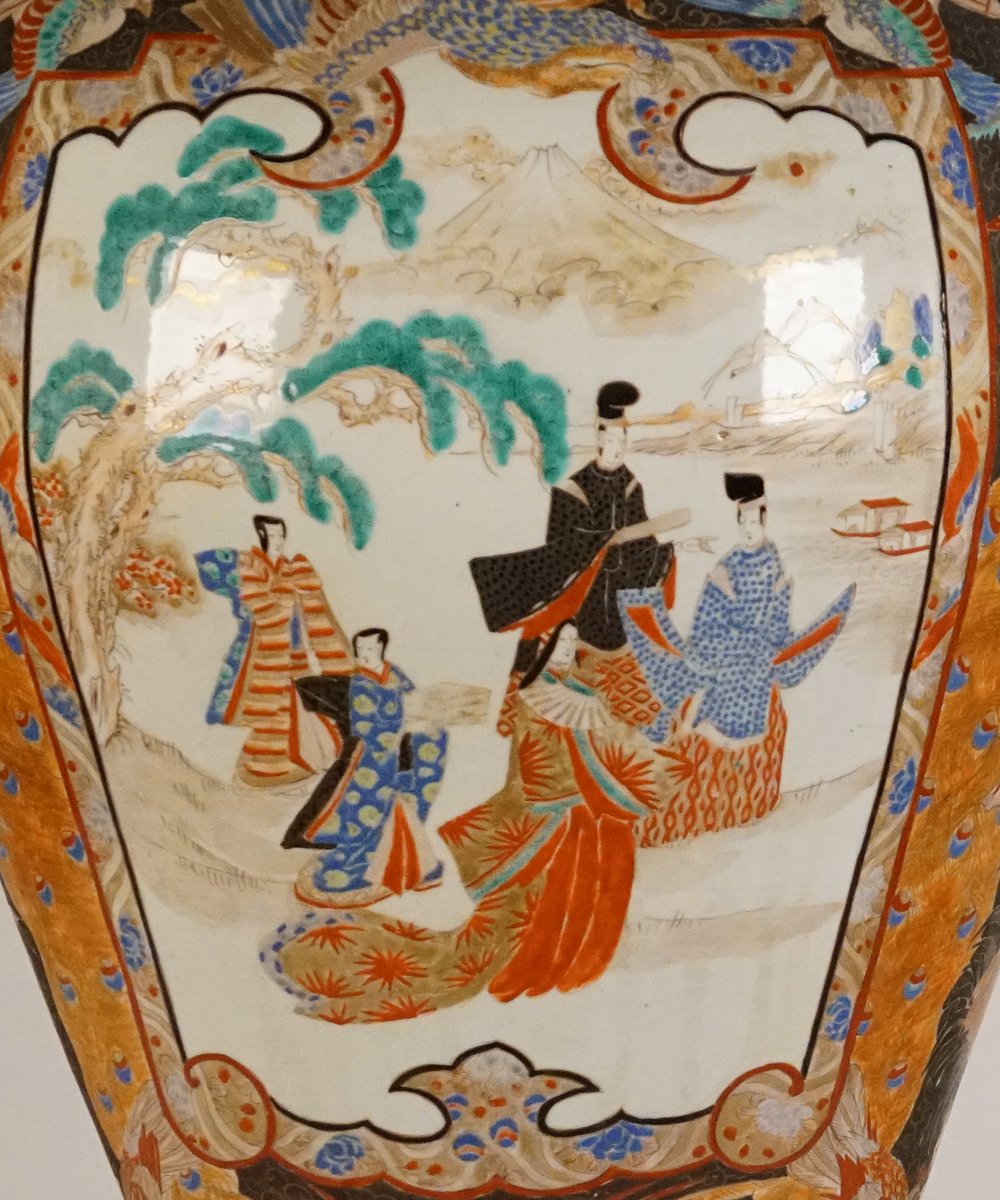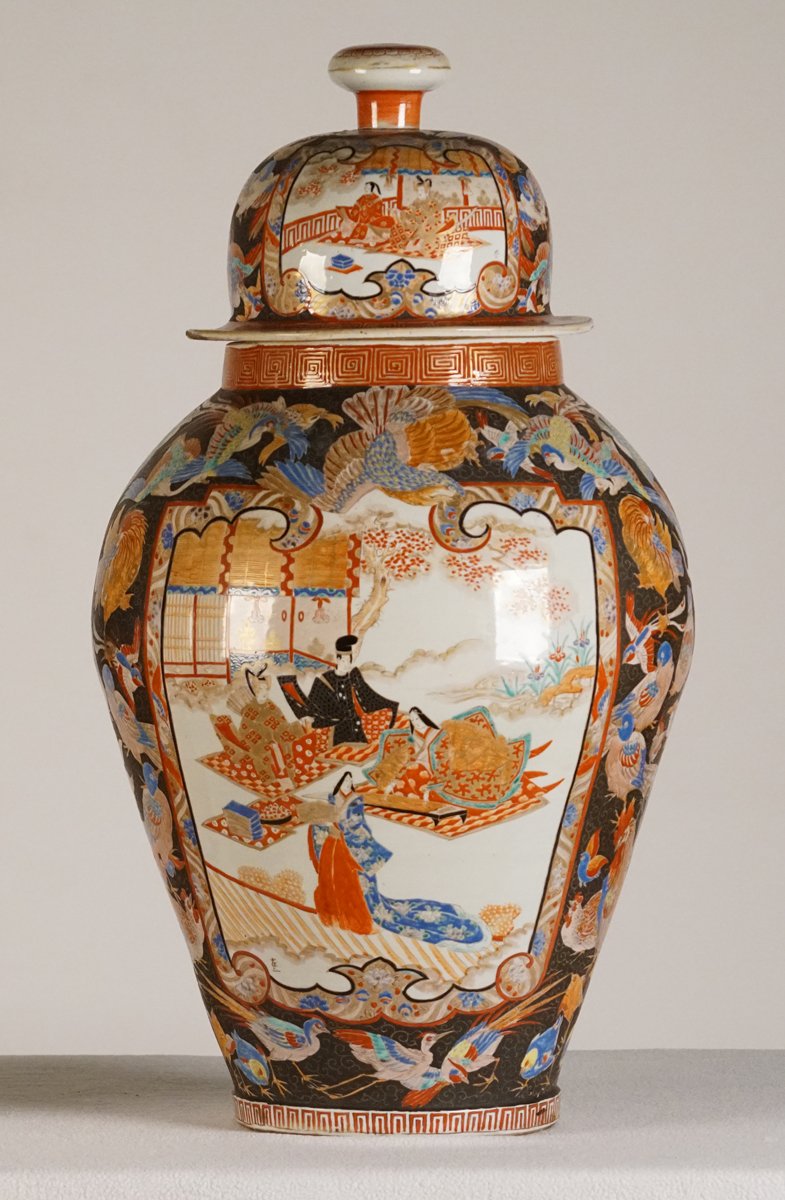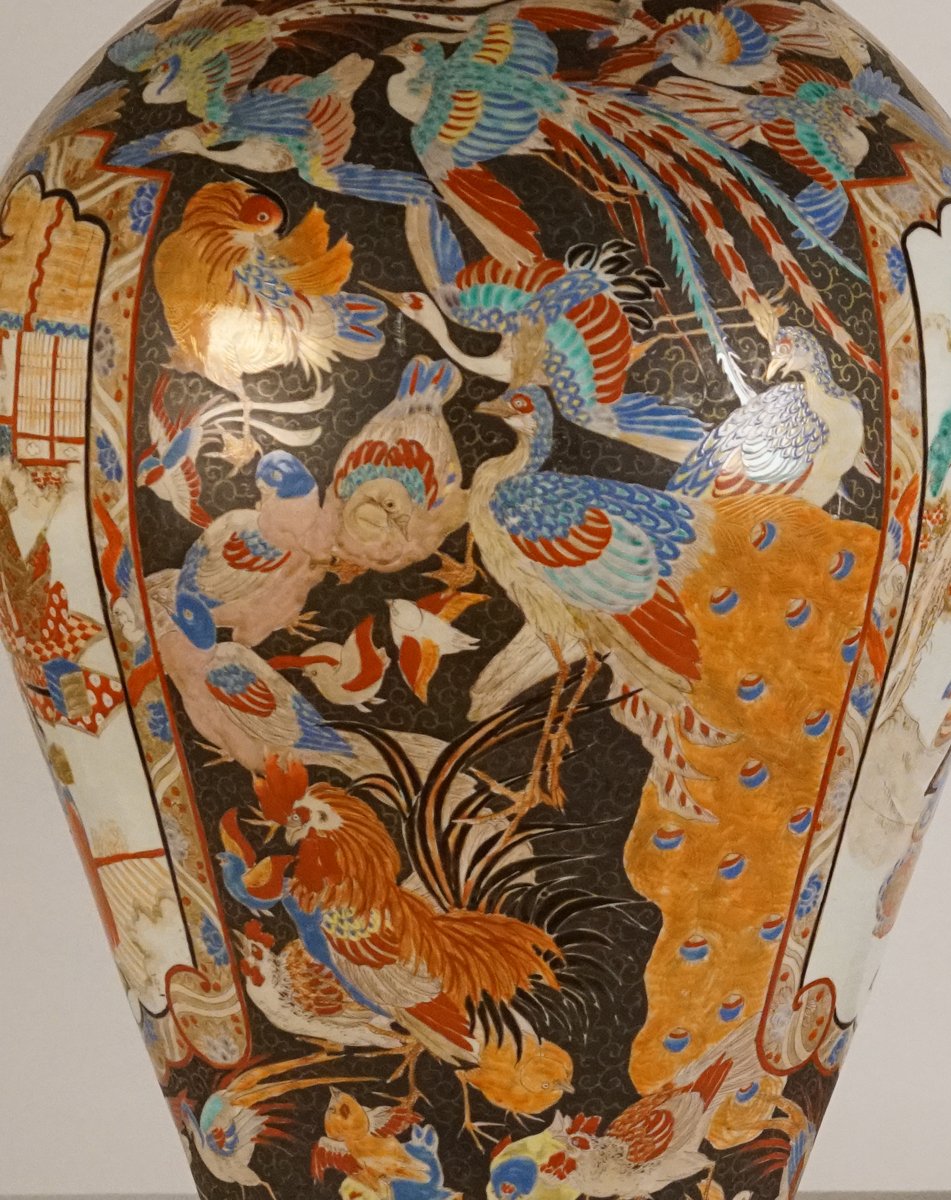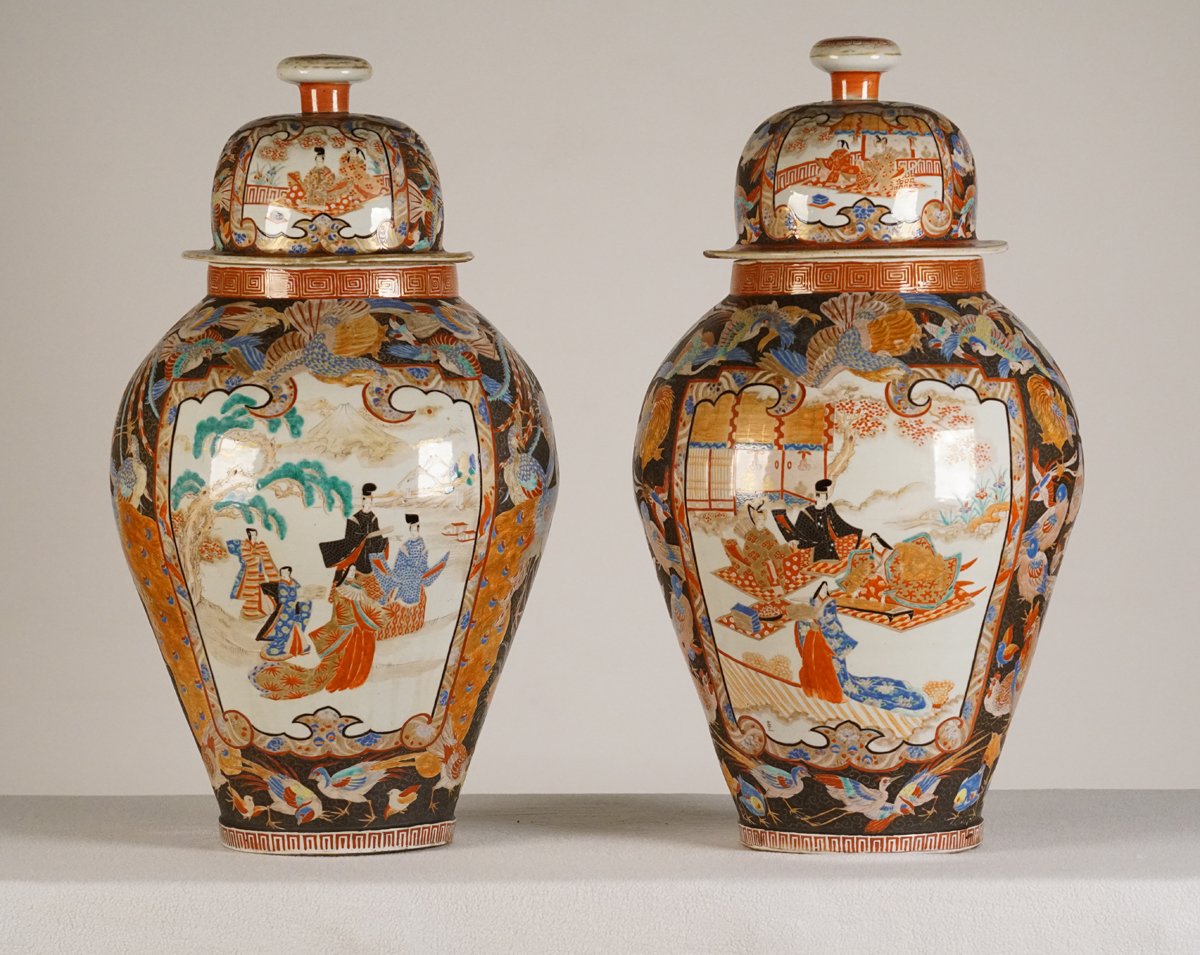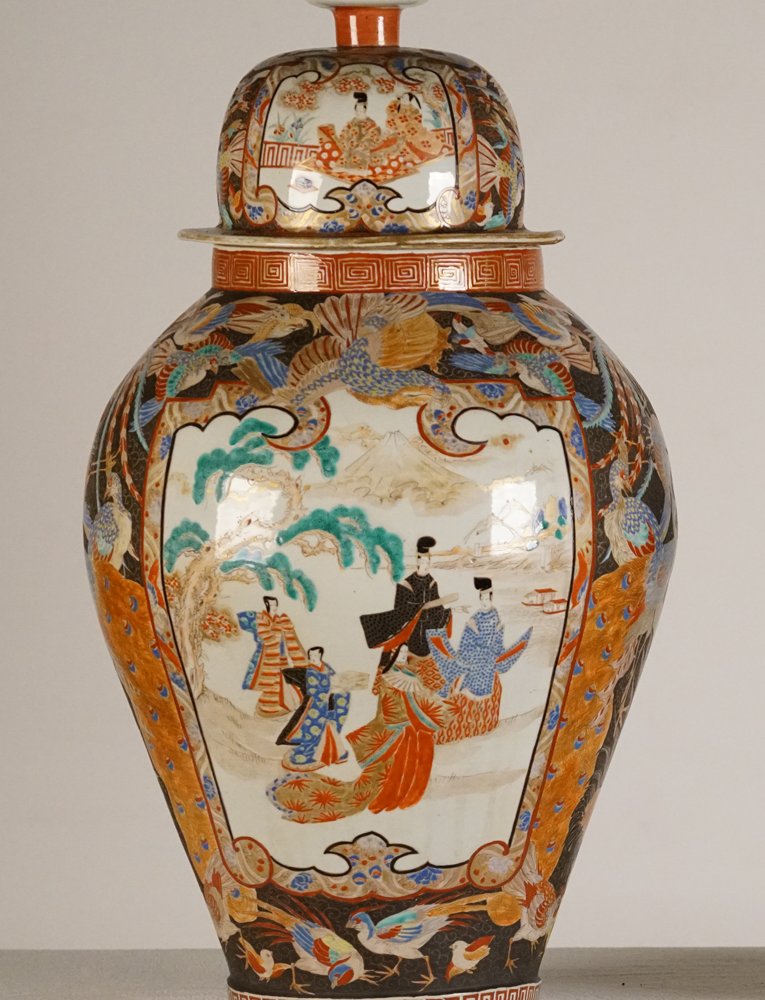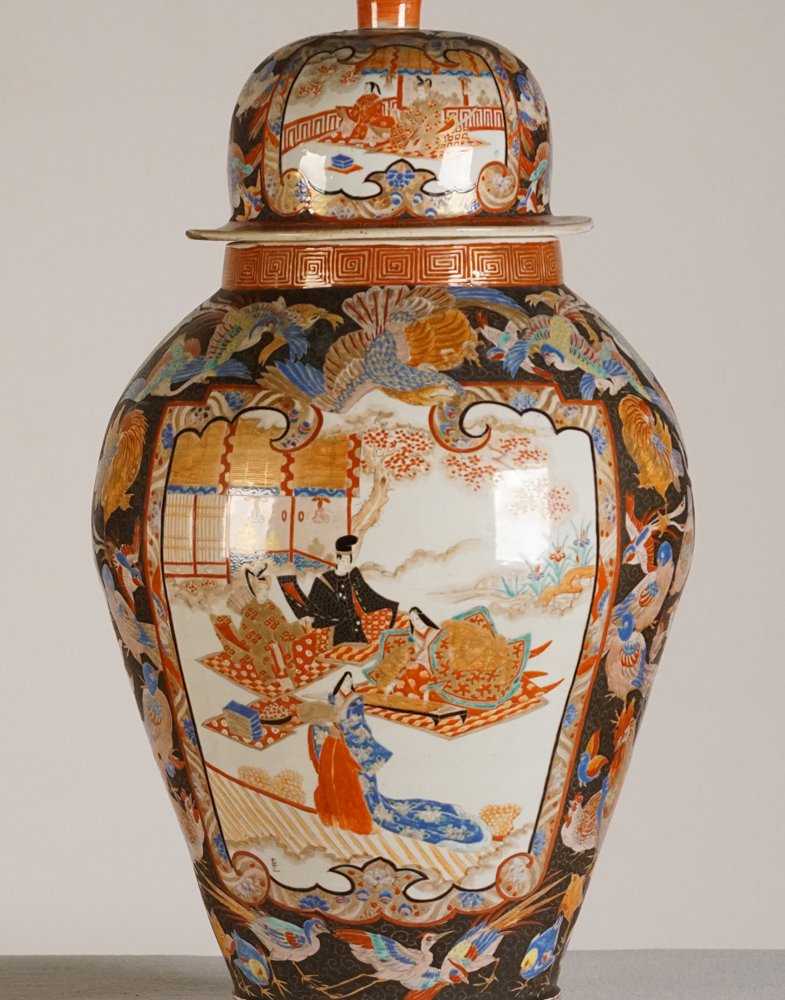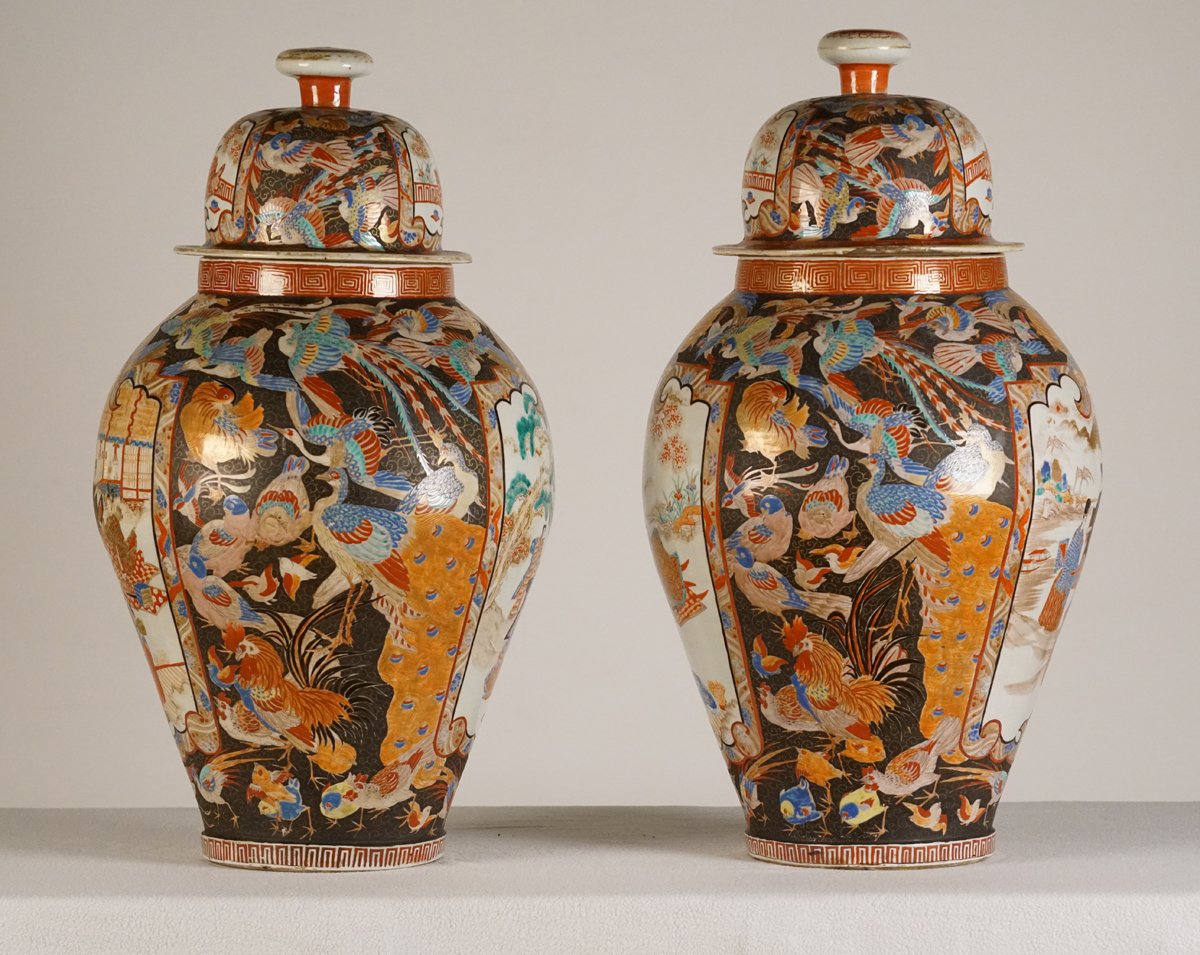A Pair of Large Porcelain Vases Katani Period
Early 19th CenturyKutani
The word Kutani means Nine Valleys and is the name of an area and a village. The two characters that make up the word Kutani consist of the character for “nine”, ku and “valley”. Since Kutani is a place, almost all pieces marked Kutani were decorated there even if by any of the many manufacturers or trading shops, rather than just a single factory. Porcelain decorators familiar with the Kutani style could also move around so as an example we can sometimes find pieces marked Yokohama & Kobe with decoration in typical Kutani style. Many Kutani made pieces might also have just the artist’s as a mark, and no location at all, leading us to also needing to look at style as a clue to the origin of a piece.
Ancient history
The first time we hear of porcelain from the Kutani (nine valleys) Village, was in 1655, in the in the first year of the Myoreki epoch. Japanese ceramic history has it that stones suitable for porcelain making was found in the Kutani mine of the Daishoji Clan, whereupon Lord Maeda Toshiharu sent Goto Saijiro to the Arita Village in the Hizen province to learn how to make porcelain. Kutani Porcelains from this early period are specifically called Ko-Kutani and are extremely rare. The production of this ware continued for about 50-60 years.
Restoration in 1800
Around 1800 the Kutani kilns was restored in Kasugayama, Kanazawa City to make utilarian porcelains. After just a few years this kiln was destroyed by fire. Around 1806-1820 Honda Sadakichi built new kilns in Wakasugi with the purpose of reviving the old style. In 1823-1831 Yoshidaya Kilns were built in Daishoji at the site of Ko-Kutani to concentrate on commercial porcelain with printed designs. The production continues until today. In the mid-1800s the Kutani name was again revived by a number of skilled craftsmen working in different styles of which Kutani Shoza (1816-1883), working with gaudy enamels and with gold brocade, might be the best known.
Production for Export
During and after the Meiji period (1868-1912) up until today almost all Kutani porcelain in Shoza style was exported. Most of the Kutani porcelain we see today is thus ‘Shoza style’, ‘Yoshida Kiln’ export wares, dating from early 19th century up until today.
Birds on Kutani porcelain
Birds as a major motif in a Kutani style appear quite frequently marked Yokohama. Tashiro (Tashiro Shoten - Yokohama 1930s) produced/commissioned many of them. Bird motifs on porcelain with light inkwash technique is highly suggestive of Yokohama style with strong Kutani influence, during the export period. Apparently Kamimoto produced similar pieces to Tashiro - and they were quite popular. There is not a well defined time after the Edo period (1603-1867) where pieces were marked or not marked Kutani and only names appear. They appear randomly except for modern pieces made in Kutani which are almost always marked Kutani.
Provenance:Private Collection New York
Le Trianon Fine Art & Antiques
Height 34in.
Inv#: Vas1


